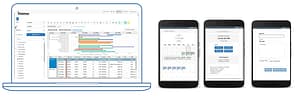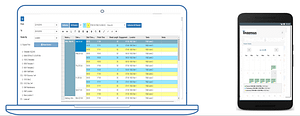
Fair Work Annualised Salary Changes for HIGA – What should be done, now.
An annualised salary arrangement is an agreement that is made where a fixed annual wage is paid to renumerate the employee for some or all or some of the separate payments they would be entitled to under an Award (e.g., hours of work, penalty rates, overtime, allowances, loadings etc.).
The Fair Work Commission has varied the Hospitality Industry (General) Award 2020 (HIGA) terms that relate annualised wage arrangements. Similar changes will also take effect from 1 September in relation to the Restaurant Industry Award.
If affected by this and other potential awards to be affected we recommend at this stage to undertake at a minimum the following in readiness for the annual review and audit requirements.
We believe similar clauses may very soon be included in other industries utilising Annualised Salary arrangements.
By the first pay period in September
- Update employee contracts with the required details of what their annualised salary includes. Comply with the current no disadvantage provisions and
- Maintain employee Timekeeping records in support their timesheet with manager and employee sign-off (electronic acceptable) of hours worked and breaks for each shift for each pay period.
Within 12 months of the implementation requirement date of the system or upon termination of the employee a reconciliation will need to be able to be undertaken using this data.
The reconciliation process will be a simple process with Inzenius.
Contact us for more information.
Summary of what this award now requires:
- Separate payment to employees, in addition to the amount of annualised salary paid, when specified “outer limits” of penalty rates and overtime are exceeded in a particular pay period as part of the annual reconciliation.
- Employers to conduct the annual reconciliation every 12 months or upon termination of employment, calculating the difference between what the employee would have earned in separate entitlements compared to salary paid, with any shortfall being back paid with 14 days.
- Annualised salary agreements to specify certain details, including the amount of annualised wage, the award entitlements that the salary includes, and the outer limits that apply.
- The additional records of time worked on different work periods to be maintained.
The changes introduced include “outer limits” of penalty rates and overtime hours that can be included in Annualised salary arrangements. These outer limits when exceeded will attract additional payments based on loaded rates of pay for:
- more than 18 penalty rate hours per week.
- More than 12 overtime hours per week.
The weekly limits specified may be averaged over a period of up to four weeks, if the employer operates a roster cycle over such a period.
Where the outer limits are exceeded, hours worked are not covered by the annualised wage, and are in addition to the annualised wage payment made, an employer is required to pay the hours worked beyond the relevant rates of pay.
Employers will need to conduct reconciliations:
- after each 12 months of the annualised wage arrangement, or
- within any 12-month period upon the termination of employment of the employee or termination of the agreement, with any shortfalls identified to be paid within 14 days.
This new obligation builds upon existing BOOT provisions which require an employee not to be disadvantaged by an annualised salary.
In addition to retaining start and finish times of each working day, employers are required to record any unpaid breaks taken. These records need to be signed off by employer and employee or acknowledged as correct by signing or by electronic means in each pay period or roster cycle.
Annualised wage employee work on a public holiday will be treated as penalty rate hours, with up to 18 being able to be worked per week. If this outer limit is exceeded, these hours will need to be paid separately at the relevant public holiday penalty rate.
Employers that already have employees on non-managerial annualised wage arrangements should:
- Ensure that payroll systems and processes will be able to accommodate outer limit payments that may need to be made in any given pay period.
- Ensure that accurate records are being made of working times, including breaks of annualised wage employees, (Timesheets) and that these records are signed and acknowledged by the employee as correct in each pay period.
- For existing salary employees – If you wish to continue using an annualised wage arrangement obtain their agreement to amend their employment terms.
Please do not rely on this information on its own but check with you relevant advisors or association to confirm the requirements for your business.
Extract of The Full Fair Work Published Determination for the HIGA Award.
4 yearly review of modern awards—Annualised Wage Arrangements (AM2016/13) HOSPITALITY INDUSTRY (GENERAL) AWARD 2020 [MA000009] Hospitality industry VICE PRESIDENT HATCHER DEPUTY PRESIDENT DEAN DEPUTY PRESIDENT SAUNDERS SYDNEY, 5 MAY 2022
Review of annualised salary provisions in modern awards – Hospitality Industry (General) Award 2020. A. Further to the decision [[2022] FWCFB 68]] issued by the Full Bench of the Fair Work Commission on 5 May 2022, the above award is varied as follows:
- By deleting clause 24 and inserting the following:
- Annualised wage arrangements
24.1 Clause 24 applies to all employees other than those within the Managerial Staff (Hotels) classification level as defined by Schedule A—Classification Structure and Definitions.
24.2 Annualised wage instead of award provisions
(a) An employer and a full-time employee may enter into a written agreement for the employee to be paid an annualised wage of an amount that is at least 25% more than the minimum wage prescribed in clause 18 multiplied by 52 for the work being performed in satisfaction, subject to clause 24.2(b), of any or all of the following provisions of the award:
(i) clause 18—Minimum rates;
(ii) clause 26—Allowances; MA000009 PR740701 DETERMINATION MA000009 PR740701 2
(iii) clause 28—Overtime;
(iv) clause 29—Penalty rates;
(v) clause 30.3—Payment for annual leave loading; and (vii) clause 35.3
(a)—Additional public holiday arrangements for full-time employees.
(b) The employee must not be required by the employer in any roster cycle to work in excess of:
(i) an average of 18 ordinary hours which would attract a penalty rate under clause 29.2(a) of this award per week, excluding hours worked between 7.00pm to midnight; or
(ii) an average of 12 overtime hours per week in excess of ordinary hours without being entitled to an amount in excess of the annualised wage in accordance with clause 24.2(c).
(c) If in a roster cycle an employee works any hours in excess of either of the outer limit amounts specified in clause 24.2(b), such hours will not be covered by the annualised wage and must separately be paid for in accordance with the applicable provisions of this award.
(d) Where a written agreement for an annualised wage arrangement is entered into, the agreement must specify:
(i) the annualised wage that is payable;
(ii) which of the provisions of this award will be satisfied by payment of the annualised wage;
(iii) the outer limit number of ordinary hours which would attract the payment of a penalty rate under the award and the outer limit number of overtime hours which the employee may be required to work in a roster cycle under clause 24.2(b) without being entitled to an amount in excess of the annualised wage in accordance with clause 24.2(c).
(e) The employer must give the employee a copy of the agreement and keep the agreement as a time and wages record.
(f) The agreement may be terminated:
(i) by the employer or the employee giving 12 months’ notice of termination, in writing, to the other party and the agreement ceasing to operate at the end of the notice period; or MA000009 PR740701 3
(ii) at any time, by written agreement between the employer and the individual employee.
24.3 Annualised wage not to disadvantage employees
(a) The annualised wage must be no less than the amount the employee would have received under this award for the work performed over the year for which the wage is paid (or if the employment ceases or the agreement terminates earlier over such lesser period as has been worked).
(b) The employer must each 12 months from the commencement of the annualised wage arrangement or, within any 12 month period upon the termination of employment of the employee or termination of the agreement, calculate the amount of remuneration that would have been payable to the employee under the provisions of this award over the relevant period and compare it to the amount of the annualised wage actually paid to the employee. Where the latter amount is less than the former amount, the employer shall pay the employee the amount of the shortfall within 14 days.
(c) The employer must keep a record of the starting and finishing times of work, and any unpaid breaks taken, of each employee subject to an annualised wage arrangement agreement for the purpose of undertaking the comparison required by clause 24.3(b).
This record must be signed by the employee, or acknowledged as correct in writing (including by electronic means) by the employee, each pay period or roster cycle. 24.4 Base rate of pay for employees on annualised wage arrangements
For the purposes of the NES, the base rate of pay of an employee receiving an annualised wage under this clause comprises the portion of the annualised wage equivalent to the relevant rate of pay in clause 18 – Minimum rates and excludes any incentive-based payments, bonuses, loadings, monetary allowances, overtime and penalties.
- By deleting the words “annualised salaried” and “annualised salary” wherever they appear in Schedule I—Part-day Public Holidays and inserting “annualised wage arrangement”. MA000009 PR740701 4 3.
By updating the table of contents and cross-references accordingly. B. This determination comes into operation on 1 September 2022.
In accordance with s.165(3) of the Fair Work Act 2009 this determination does not take effect in relation to a particular employee until the start of the employee’s first full pay period that starts on or after 1 September 2022. VICE PRESIDENT
Read More About Inzenius:
It is all about the culture and the drive delivery and maintenance behind it.
The Inzenius story is all about innovation in automation of complex Award Interpretation, linked directly to the Time and Attendance validation against the Rostering with Payroll System for the automated creation of the Electronic Timesheet with its electronic sign-off by the manager and employee through to automated payroll production and processing, including STP2 Payroll System and bank processing of pays.
Contemporary employee communication to and from their mobile device delivers a great employee experience with an all-in-one HRM Rostering Timekeeping and Payroll System.
Australian Compliant Payroll Is So Much Easier with Inzenius’ Award Interpretation Software
The Inzenius package includes all the Initial Processes from employee Onboarding linked to Rostering, Time & Attendance, Award Interpretation from the approved Electronic Timesheet and STP2 approved Payroll processing and distributions in one. That’s Inzenius.

All Inzenius users were easily set up on the Inzenius STP Payroll System reporting platform due to the flexibility of Inzenius’ Australian Compliant Award Interpretation software.
Employee device Onboarding data entry efficiency.

Easy Rostering Development and Employee Notification.

Electronic Timesheet Software with GPS locating.

Simplified Electronic Timesheet Software inbuilt into the Inzenius Payroll System directly into the Inzenius Electronic Timesheet Software makes it so easy for the staff to record their time worked at each location with GPS tracking and automated time recording for validation t rosters for supervisor approval.

Inzenius commenced with the development and launch of its Award-winning Rostering with Payroll System in 2007. It has been awarded the Oracle and Telstra Innovation Awards and has a patent for its innovative system design.
What makes it so different?
The Automated Payroll System with its Inzenius own in-built comprehensive Award Interpretation from its Electronic Timesheet Software that presents to supervisors the comparison of times attended to the Staff Rostering System for analysis and approval. The system will create the ability of group electronic sign-off of all the compliant times worked and present for review and acceptance of any variances.
Remote employee timekeeping process from local phone, computer, kiosk or mobile device with GPS site tracking clock in and options are also available.
Adding tracking of time worked on different jobs provides the ability for individual job labour costing with analysis of the Award Interpretation available from the Staff Rostering System as well as the Electronic Timesheet Software for each job and or customer. This data provides the opportunity to create a direct billing API to the business billing system. It also can deliver labour time and cost productivity analysis based on the time allocated for each task completed in comparison to the actual time and cost thereof taken for the job.
The HRM Rostering Timekeeping and Payroll System integrated in the one system delivers a great employee experience and efficiently through the system employee portals published to their device. The features that can be included in the Staff Rostering System is the publication to each employee of the roster for the acceptance. Unfilled rosters are updated directly for the supervisor to follow up on those not accepted. If a roster shift remains empty the supervisor will be presented with available employees to fill the shift with the appropriate skills and permissions to work at the site.
The HRM Rostering Timekeeping and Payroll system will enable the employees to also add their availability, leave requests or update details on their employee file with direct updates to the system.
Employees will also be able to view:
- Their approved times on the device in the Electronic Timesheet Software and address any errors or omissions with their supervisor each day after the shifts have been approved in the Electronic Timesheet Software.
- Their payslips on the device in the Inzenius HRM Rostering Timekeeping and Payroll System.
- They will also be able to see their leave balances as they apply that then can be approved online by the supervisor in the Staff Rostering System
Building and costing rosters to the budget is easy due to the Inzenius Award Interpreter link to the Inzenius Staff Rostering System. The systems Award Interpreter Software will cost the rosters developed and compare them to the budgets established for each business unit. This provides the opportunity to modify the roster before they are published to the employees.
Once rosters are ready for publishing the supervisor with a click of a button pushes the roster to each employee mobile device. Of course, the alternative is to print and post the roster from the easy-to-read roster publication and print tool.

Using the MS PowerBI and reporting capabilities, the data is easily available for the development of the business reporting and dashboard.
The power of Inzenius and its unique capabilities in its Australian Compliant Award Interpretation is all delivered in its HRM Rostering Timekeeping Payroll system, built specificity for the Australian and New Zealand payroll rule environments. Getting interpretation wrong is not an option these days.[/vc_column_text][/vc_column][/vc_row]
